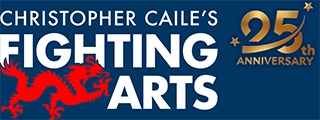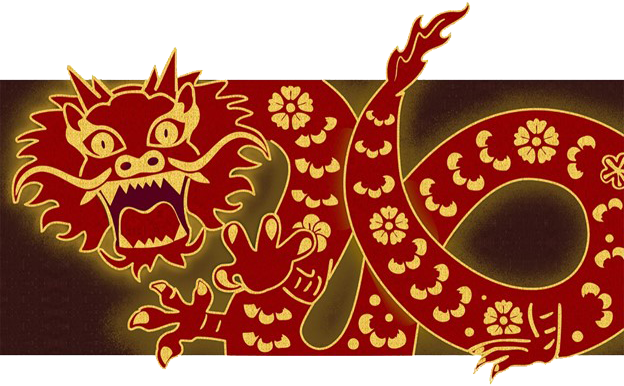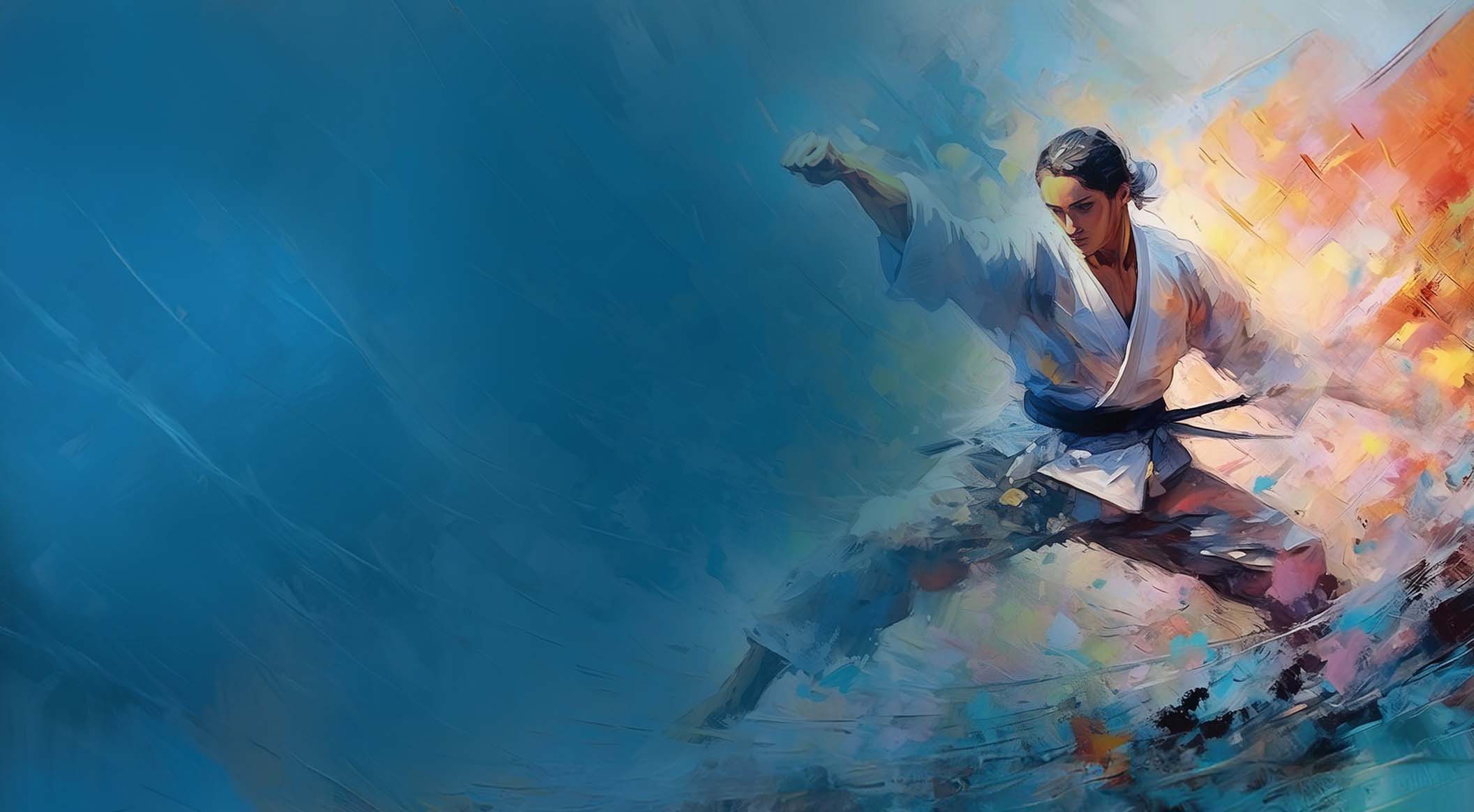The Chains Of A Master
By Christopher Caile
Being a "Master" has its price. In fact I often feel sorry for those who have adopted that title.
There certainly are masters of their art. And I deeply respect those whom I have known and studied with. These impressive individuals have committed a lifetime to perfecting their art, which they often keep refining and developing. But unfortunately, the term "Master" has lost much of its significance, now that many individuals with dubious experience or too few years of study have adopted "Master" as a marketing tool, or worse, as a crutch to ego (but this must be a subject of another article).
I can understand the motive to "Master" yourself, especially if you are unaffiliated with a major martial arts organization (which controls rank) and are fighting for students in a crowded market. Certainly a high rank and the term "Master" buys credibility among the uninformed. It can translate into new students and money.
The problem is that "Master" implies that you have perfected your art (something that usually takes 30-50 years of dedicated practice). It is not a world for 20 or 30 year old self-inflicted 9th and 10th Dans (degree of black belt) who have adopted this title.
By adopting the title too soon, teachers in effect self-impose chains on themselves, something that, once attached, usually brings further learning to a screeching halt – too often long before skill and potential have been fully developed. Growth is stunted.
It's rare even to see anyone fourth dan or above studying any other art, attending seminars or workshops. You never see Masters – especially those who run their own schools or organizations. What Master would be seen studying anything from anyone else? It would imply their mastery was not quite complete — after all, they are the chief honcho and are supposed to know it all. They are supposed be master teachers, not students.
This problem even extends to studying unrelated arts. A good friend who is a well known martial arts master (a legitimate one) and head of his own martial arts association once told me this story. Back in Japan while visiting he decided to take a few classes in a healing energy art in which he was interested. In his first class, however, this teacher announced to those attending that he was pleased that one of his new students was "Master XXXX" and went on to recount details to them of his background and fame. My friend felt acutely embarrassed, and never returned to class.
Another problem for those adopting "Master" too early is the negative reputation created. You may fool new students (at least some of them), but not legitimate teachers who may know you. In short, you sabotage your reputation and lose respect in the martial arts community.
How different it was in Okinawa in the early 19th Century before karate became commercial. At that time many now famous karate teachers sought out each other to learn. This was before ranks, adopted titles or even names of karate styles had been defined. It was also before karate became big business. For example such notables as Chojun Miyagi, Kenwa Mabuni, Kentsu Yabu, Chotoku Kyan, Chojo Oshiro and Chokki Motobu trained and taught together in the Okinawan Tode (karate) Research Club. For them the goal was to learn more about their art, not to make a business of it.
If you are truly a Master of your art, great. But if you aren't try, not to get trapped in the titles and hoopla. Be humble, study continuously, study what can benefit you in terms of understanding the depth of technique and application of your art. Study too the history of your art too. Take time to perfect the art you practice. Perhaps then you will understand that Masters are made, not just proclaimed.
About the Author Christopher Caile

Screenshot
Christopher Caile is the Founder and Editor-In-Chief of FightingArts.com. He has been a student of the martial arts for over 65 years.
He first started in judo while in college. Then he added karate as a student of Phil Koeppel in 1959 studying Kempo and Wado-Ryu karate. He later added Shotokan Karate where he was promoted to brown belt and taught beginner classes. In 1960 while living in Finland, Caile introduced karate to that country and placed fourth in that nation's first national judo tournament.
Wanting to further his karate studies, Caile then hitch hiked from Finland to Japan traveling through Scandinavia, Europe, North Africa, the Middle East and South and Southeast Asia — living on 25 cents a day and often sleeping outside.
Arriving in Japan (1962), Caile was introduced to Mas Oyama and his fledgling full contact Kyokushinkai Karate by Donn Draeger, the famous martial artist and historian. Donn also housed him with several other senior international judo practitioners. Donn became Caile's martial arts mentor, coaching him in judo and introducing him to Shinto Muso-ryu under Takaji Shimizu.
Caile studied at Oyama's honbu dojo and also at Kenji Kurosaki's second Tokyo Kyokushinkai dojo. In his first day in class Oyama asked Caile to teach English to his chief instructor, Tadashi Nakamura. They have been friends ever since. Caile also participated in Oyama's masterwork book, "This Is Karate."
Caile left Japan with his black belt and designation as Branch Chief, the first in the US to have had extensive training in Japan directly under Oyama Sensei. As such, Oyama Sensei asked him to be his representative on visits to his US dojos to report on their status.
A little over a year later, Nakamura, Kusosaki and Akio Fujihira won an epic David vs. Goliath challenge match against Thailand's professional Muay Thai Boxers in Bangkok, Thailand, thrusting Kyolushinkai and Nakamura into national prominence.
Back in the US Caile taught Kyokushinkai karate in Peoria, Il while in college and later in Washington, DC. while in graduate school. Durimg this time Shihan Nakamura had moved to New York City to head Kyokushinkai's North American Operation.
In 1976 when Kaicho Tadashi Nakamura formed the World Seido Karate organization, Caile followed. Living then in Buffalo, NY, Caile taught Seido karate and self-defense at the State University of New York at Buffalo (SUNY Buffalo) for over 15 years where he also frequently lectured on martial arts and Zen in courses on Japanese culture.
Caile moved to New York City in 1999 to marry Jackie Veit. He is now an 8th degree black belt, Hanshi, training in Seido Karate's Westchester, NY Johshin Honzan (Spiritual Center) dojo. In Seido Caile is known for his teaching of and seminars on kata applications. He also produced a 14 segment video series on Pinan kata Bunkai currently available to Seido members.
Caile is also a long-time student and Shihan in Aikido. He studied in Buffalo, under Mike Hawley Shihan, and then under Wadokai Aikido's founder, the late Roy Suenaka (uchi deshi under Morihei Ueshiba, founder of Aikido and was Shihan under Tohei Sensei). In karate, Suenaka (8thdan) was also an in-house student of the Okinawan karate master Hohan Soken.
Having moved to New York City, Caile in 2000 founded this martial arts educational website, FightingArts.com. Twenty-five years later, in 2025, it underwent a major update and revision.
For FightingArts.com and other publications Caile wrote hundreds of articles on karate, martial arts, Japanese art, Chinese Medicine and edited a book on Zen. He also developed relationships with a cross section of leading martial arts teachers. Over the last four decades he has conducted extensive private research into karate and martial arts including private translations of the once secret Okinawan hand copied and passed on Kung Fu book, the Bubishi, as well as an early karate book by the karate master Kenwa Mabuni. He periodically returns to Japan and Okinawa to continue his studies and participate Seido karate events. In Tokyo he practiced (with Roy Suenaka Sensei) in a variety of aikido organizations with their founders – including private interviews and practices at the Aiki-kai Aikido Honbu dojo with the son and grandson of aikido's founder, Doshu (headmaster) Kisshomaru (an old uchi-deshi friend) and his son, Moriteru Ueshiba and in Iwama with Morihiro Saito. On Okinawa he studied Goju Ryu karate under Eiichi Miyazato, 10th dan founder of Naha's Jundokan, and also with Yoshitaka Taira (who later formed his own organization, who specialized in kata Bunkai. While there Caile also trained with Hohan Soken's senior student, Master Fusei Kise, 10 dan as well as with the grandson of the legendary karate master Anko Itosu.
Caile's other martial arts experience includes: Diato-ryu Aikijujitsu and Kenjitsu, kobudo, boxing, Muay Thai, MMA, Kali (empty hand, knife and bolo), study of old Okinawan Shoran-ryu & Tomari body mechanics, study of old Okinawan kata under Richard Kim, study of close quarter defense and combat, including knife and gun defenses, Kyusho Jitsu and several Chinese fighting arts including 8 Star Praying Mantis, Pak Mei (White Eyebrow), and a private family system of Kung Fu.
Caile is also a student of Zen as well as a long-term student of one branch of Traditional Chinese Medicine, Chi Kung (Qigong). As one of two senior disciples of Chi Kung master Dr. Shen (M.D., Ph.D.) Caile was certified to teach and practice. This led to Caile's founding of the The Chi Kung Healing Institute on Grand Island, NY. In Western NY, he also frequently held Chi Kung seminars, including at SUNY Buffalo and at the famous Chautauqua Institution in Chautauqua, NY. His articles on Chi Kung also appeared in the Holistic Health Journal and in several books on alternative medicine.
Caile holds a BA in International Studies from Bradley University and MA in International Relations with a specialty in South and Southeast Asia from American University in Washington, D.C. While in Buffalo, NY he also studied digital and analog electronics.
In his professional life Caile also worked in public relations and as a newspaper reporter and photographer. Earlier he worked in the field of telecommunications including Managing a Buffalo, NY sales and service branch for ITT. He then founded his own private telephone company. This was followed by creation of an electrical engineering company that designed and patented his concept for a new type of low-cost small business telephone system (which was eventually sold to Bell South). The company also did contract work for Kodak and the US space program. Simultaneously Caile designed and manufactured a unique break-apart portable pontoon boat.
Most recently Caile co-founded an internet software company. Its products include software suites with AI capability for control and management of streaming media, such as video and music, an all-in-one book publishing software product for hardcover, eBook and audio book creation and security software for buildings and government use.
For more details about Christopher Caile's martial arts, work experience and life profile, see the About section in the footer of this site.
Search for more articles by this author:






